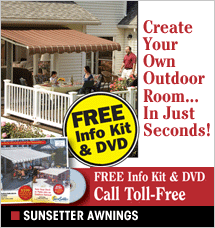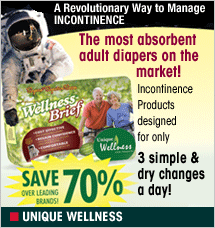Health, Wellness & the Good Life
Container Gardening Has Many Advantages

It would be lovely to have a lush garden of flowers and fresh veggies tended by a talented gardener. Most people, however, are far more likely to have a third-floor balcony or a yard with soil like concrete.
The solution when you have no fertile ground in sight? Grow plants in containers. The choices are endless.
What Containers Are Best?
Almost anything works, so long as there is good drainage. You can find a wide range of large and small containers at garden shops, warehouse stores, and nurseries. Here are some popular choices:
- Terra cotta is a longtime favorite and comes in a wide range of sizes and shapes. Glazed containers hold moisture longer than unglazed. Strawberry jars — those large pots with the little "pockets" — can be used for all sorts of plants including flowers and can make a dramatic statement on your patio or front porch.
- Wood is relatively durable and redwood and cedar are naturally rot resistant. You can build or purchase wooden window boxes in many sizes and wooden wine half-barrels are hard to beat for both form and function.
- Plastic is widely used for containers, making up in practicality what it lacks in charm. It's durable, inexpensive and lightweight, so it's no surprise that most plants are in plastic when you bring them home from the store. Often you can simply stash the plastic inside a more attractive container without repotting.
- Stone or molded concrete containers are heavy, but durable and dramatic, weathering quickly to take on a mellow, long-established look.
- Fiberglass is increasingly popular. It effectively mimics expensive materials such as lead or bronze and is durable, although somewhat brittle as it ages.
- Chimney flue pieces are great in varied sizes. They have no bottom, of course, so can't be moved easily, but they are cheap and come in various lengths to make an eye-catching arrangement in your yard. You can put them atop poor soil, fill them with good dirt and eventually larger plants will root into the ground.
- For cascading plants, don't overlook hanging containers. Some are simple moss-lined wire frames. Others have built-in saucers. These will need more frequent watering.
- Home items may lend themselves to housing a plant or two. How about an old pail or coal scuttle, a handsome basket (with a plastic insert) or Grandma's never-used soup tureen.
What to Plant and How to Do it
Remember that containers are always second best because plants didn't evolve with a reduced root area. The bigger the container, the better. Remember, too, the soil should be porous, not heavy.
Purchase potting soil specifically formulated for container gardening. If the containers will be in the sun for a good portion of the day, add some water-saving polymers which are available at garden stores. The bead-like polymers (which are used in disposable diapers) swell when exposed to water and then release the moisture slowly.
The keys to successful container gardening are proper planting, watering and fertilizing. In dry weather, daily watering may be required. At the same time, it's important to remember that frequent watering can leach out nutrients, so you must fertilize container plants more often than those in the ground, but with a smaller dose each time. A light, but constant feeding is ideal and a slow-release fertilizer is a time saver.
It's possible to raise almost any flower or vegetable in a container. You can even grow small trees such as Japanese maples or tree roses. Another advantage of using containers is that when you move you can often take your plants with you.
The success of a container garden is influenced by exposure – sun, shade or a combination of the two. Shady spots are best suited to plants such as ferns, coleus and impatiens. If you have ample sun, choose hardy annuals such as geraniums, petunias or chrysanthemums. With a changing exposure, flowers such as begonias, scarlet sage and dianthus are good choices.
If your containers receive six to eight hours of sun daily, you can nurture fresh herbs and vegetables. There are special hybrid tomatoes such as Patio or Sweet 100s that do well in containers. Consider some jalapeño or banana peppers as well. And nothing beats fresh herbs such as mint, basil, sage, chives, parsley and rosemary, which are attractive as well as tasty. Local farmers markets often have herb seedlings for sale along with samples of the various herbs.
To learn more about container gardening, consult gardeners at area nurseries, talk to a green-thumbed neighbor or check out the Internet. Then relax with your container garden.
Lynn Pribus grows pansies, coleus, spider plants and lots of basil in containers on her Charlottesville, Virginia, deck.




























































